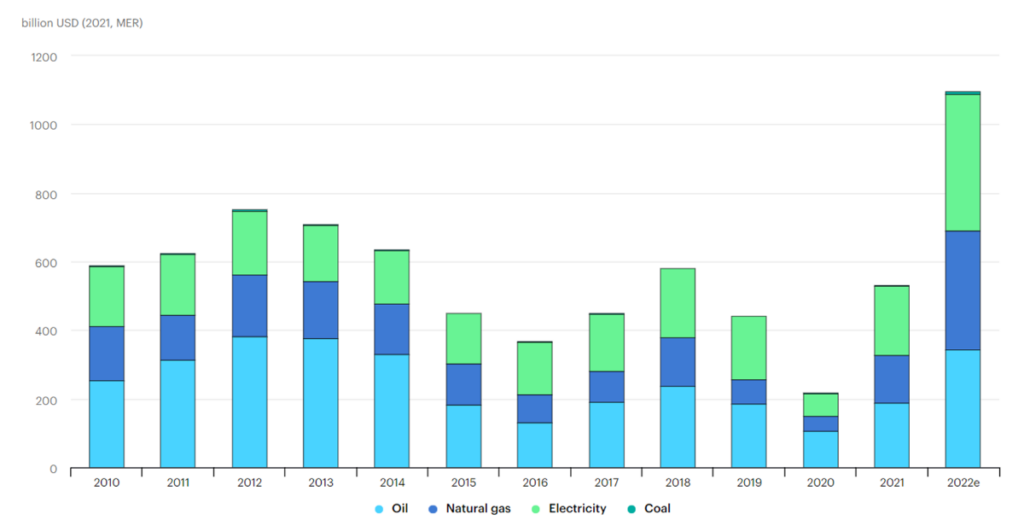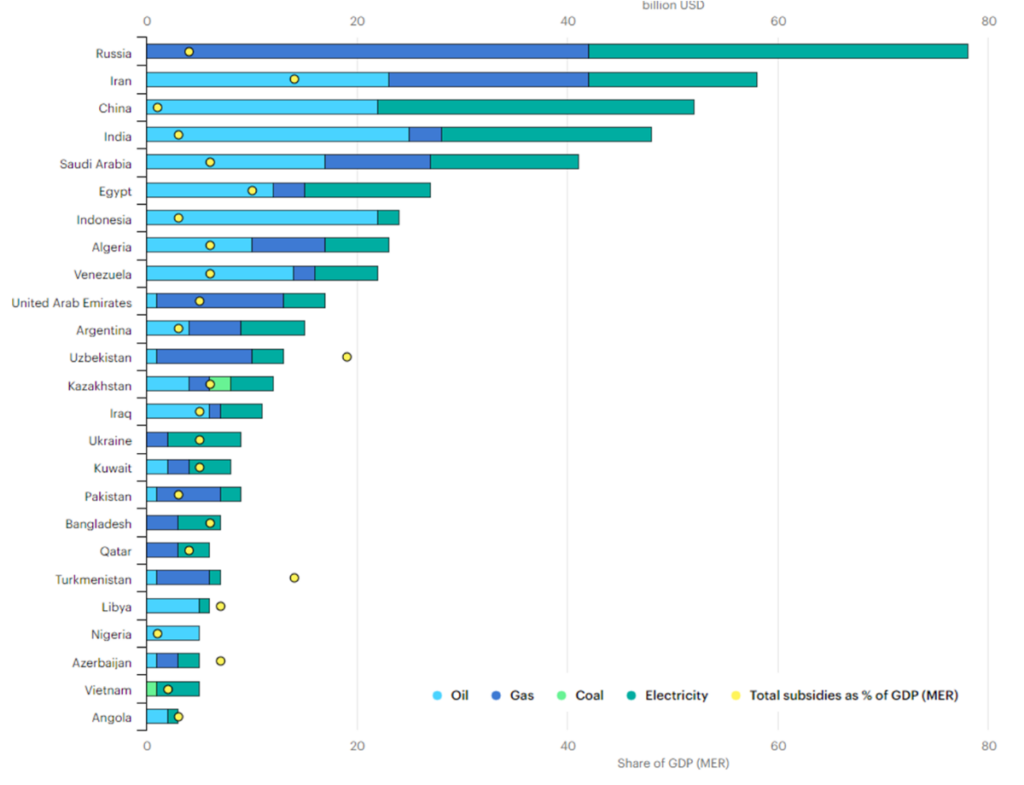Courtesy of ENERGYminute
See more articles and infographics from ENERGYminute HERE
Earlier this week, members of the European Union (EU) met to try and agree on an end date for fossil fuel subsidies. Negotiating between 27 countries proved to be as challenging as an entire season of House of Cards, with some members aiming for 2025 or 2030, while other members didn’t want to set a date at all.
The EU planned to reach an agreement before COP28 in the UAE, but like making plans in the group chat, who knows if this date will stick. And as it turns out, figuring out exactly what qualifies as a subsidy is easier said than done.
Fossil fuel subsidies 101
There are two ways governments can provide support to fossil fuels: through direct or indirect subsidies.
- Direct or explicit subsidies: Actual payments or tax breaks for fossil fuel companies.
- Indirect or implicit subsidies: Other means of providing consumers with lower prices for the fossil fuel, often by not imposing full environmental costs.
The details: Direct subsidies are usually found in national, regional, and local tax codes plus regulatory frameworks. They outline tax breaks and incentives for fossil fuel companies.
Implicit subsidies are significantly more challenging to define. An approach used by the Organization for Economic Co-operation and Development (OECD) and the International Energy Agency (IEA) is to figure out the gap between the final end-user price and internationally defined reference levels.
- An example would be if a government was setting a price cap on fuel. The price paid at the pump (end-user price) would be lower than what the free market price (reference price). So the value of the subsidy would be the difference between the two.
Implicit subsidies also factor in environmental and social costs and try to determine the value for damages by emissions and pollution. These can be tricky to define.
Conflicting views: For example, in 2022, two global organizations – the International Monetary Fund (IMF) and the OECD – reached widely different subsidy estimates. The IMF considered global implicit subsidies alone to be on the order of $6.5 trillion while the OECD/IEA total, including both explicit and implicit, was just $1 trillion.
Fossil fuel consumption subsidies, 2010-2022
billion USD

Courtesy of International Energy Agency
The OECD/IEA numbers are generally considered to be more credible. A recent study published in International Environmental Agreements found the main driver for the IMF’s estimates were not scientific or economic, but initiatives from the IMF staff themselves.
Growing: Subsidies more than doubled between 2021 and 2022, propelled by governments easing energy prices as a result of the Russia-Ukraine war.
Value of fossil-fuel subsidies by country, 2021
billion USD

Courtesy of the international Energy Agency
Of the International Energy Agency’s top 25 countries providing subsidies in 2021, Russia and Iran were at the top of the list. Meanwhile, the IMF was singing a different tune, finding instead that China and the United States were the largest subsidy providers, mostly from implicit support.
Promises: No country has fully committed to phasing out subsidies for fossil fuels, though Canada recently committed to eliminating “inefficient” subsidies.
In the US, the Biden administration promised to phase out subsidies as well, but there is skepticism whether a motion will be able to pass through Congress. And with the energy crisis, there has been a renewed focus on energy security and promoting domestic production.
Zoom out: With many countries still reliant on fossil fuels and developing countries focused on access to affordable energy, it will be challenging to fully eliminate subsidies that support the critical sector. This has held true for many years.
Going back to 2009, G20 countries agreed then to phase out fossil fuel subsidies. If they could only see us now, hitting brand new highs in 2022, nearly twice our 2009 levels. And the record levels set last year came directly after a 2021 Glasgow pact, when countries pledged to start rolling back fossil fuel subsidies at that point.
Share This:
Next Article




